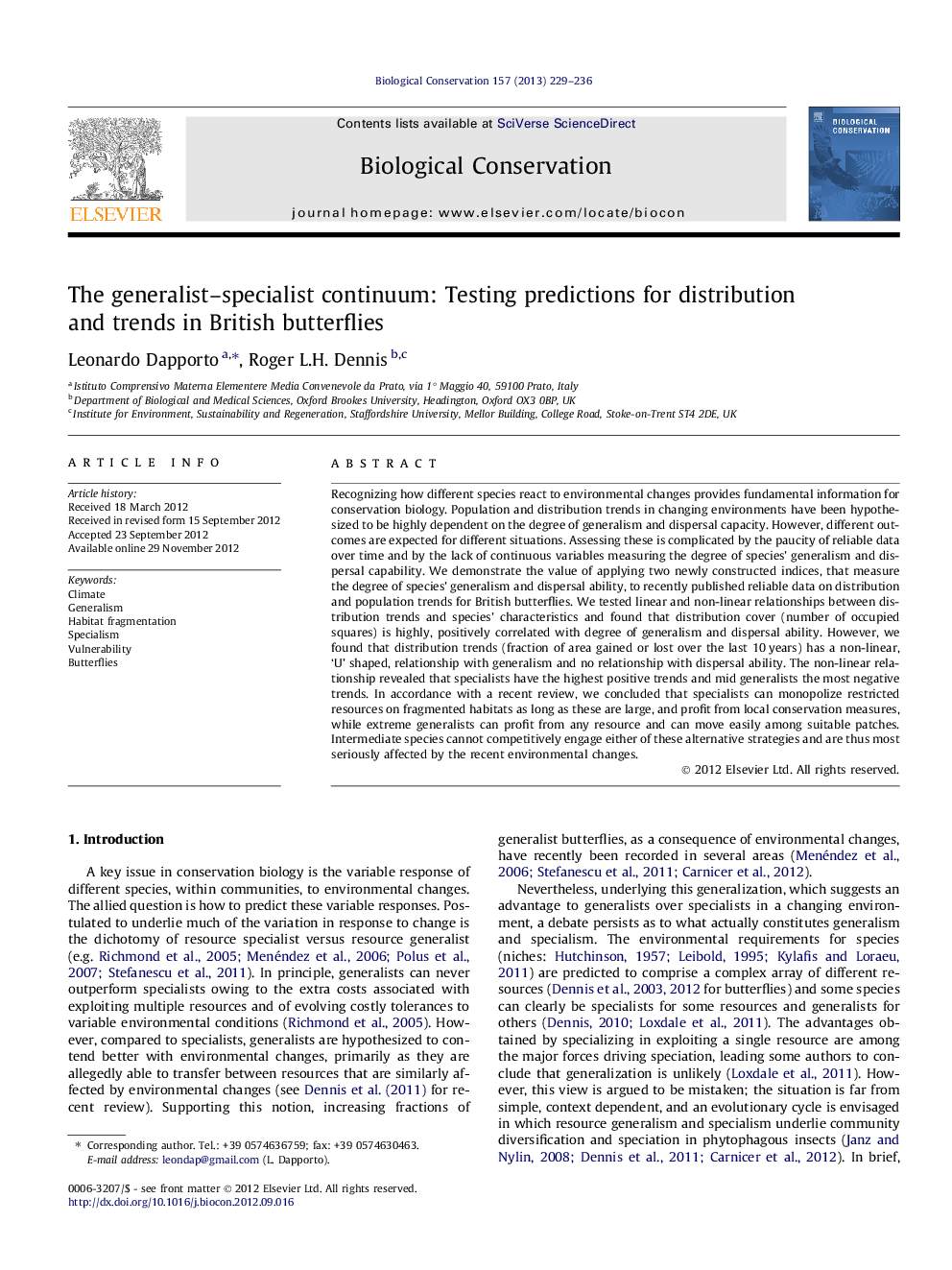| کد مقاله | کد نشریه | سال انتشار | مقاله انگلیسی | نسخه تمام متن |
|---|---|---|---|---|
| 4385205 | 1617944 | 2013 | 8 صفحه PDF | دانلود رایگان |

Recognizing how different species react to environmental changes provides fundamental information for conservation biology. Population and distribution trends in changing environments have been hypothesized to be highly dependent on the degree of generalism and dispersal capacity. However, different outcomes are expected for different situations. Assessing these is complicated by the paucity of reliable data over time and by the lack of continuous variables measuring the degree of species’ generalism and dispersal capability. We demonstrate the value of applying two newly constructed indices, that measure the degree of species’ generalism and dispersal ability, to recently published reliable data on distribution and population trends for British butterflies. We tested linear and non-linear relationships between distribution trends and species’ characteristics and found that distribution cover (number of occupied squares) is highly, positively correlated with degree of generalism and dispersal ability. However, we found that distribution trends (fraction of area gained or lost over the last 10 years) has a non-linear, ‘U’ shaped, relationship with generalism and no relationship with dispersal ability. The non-linear relationship revealed that specialists have the highest positive trends and mid generalists the most negative trends. In accordance with a recent review, we concluded that specialists can monopolize restricted resources on fragmented habitats as long as these are large, and profit from local conservation measures, while extreme generalists can profit from any resource and can move easily among suitable patches. Intermediate species cannot competitively engage either of these alternative strategies and are thus most seriously affected by the recent environmental changes.
► We relate distribution of butterflies to resource generalism and dispersive ability.
► Widely distributed butterflies are typically generalists and good dispersers.
► Distributions of specialists are expanding whereas mid generalists have negative trends.
► Specialists benefit most from conservation programs for isolated habitats.
► Moderate generalist butterflies are most vulnerable to current environmental changes.
Journal: Biological Conservation - Volume 157, January 2013, Pages 229–236